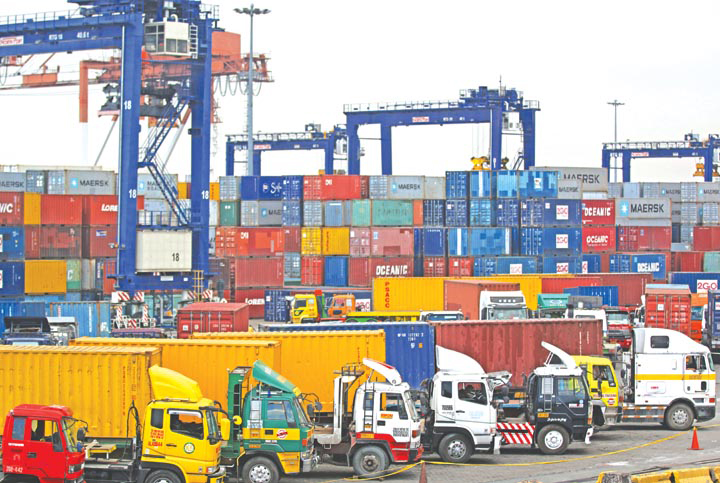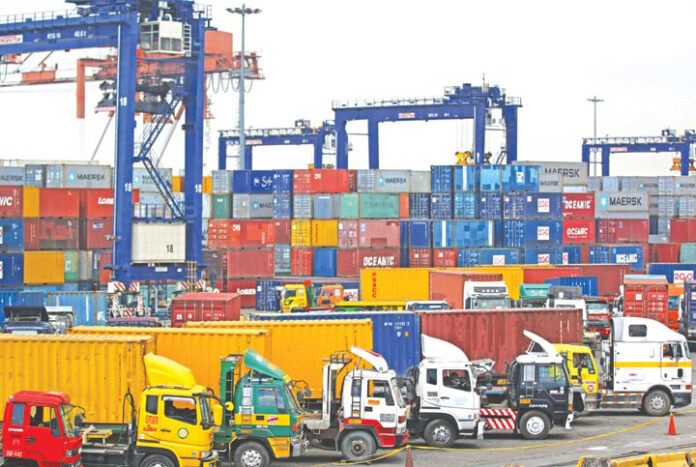
THE global container crisis and the expected holiday spending in the country’s top markets have apparently prompted international buyers to front-load their purchases of locally made Christmas decors and electronics.
Some economists said, however, that the surge in the country’s trade performance in April was largely due to base effects given the contraction of local and international trade caused by the great lockdown.
On Wednesday, the Philippine Statistics Authority (PSA) said the country’s export earnings surged 72.1 percent while import receipts more than doubled or posted a 140.9-percent growth in April 2021.
“For exports, yes, it is probable that some firms are taking advantage of Christmas demand assuming that demand prospects will definitely be better come the end of 2021, especially for many of our trading partners,” Union Bank of the Philippines Chief Economist Ruben Carlo O. Asuncion told the BusinessMirror.
“It is highly probable as well that for imports, domestic demand for home appliances is improving as the economy gears up for more easing,” Asuncion added.
An expert noted that buyers would usually have their Christmas orders shipped in the third quarter of the year.
However, a report from the Financial Times indicated that retailers in the United States, one of the Philippines’s major markets, are scrambling to build up their holiday inventory to avoid delays that may be caused by the container crisis.
In terms of commodities, exports that recorded the highest growth were ceramic tiles and decor which posted growth of 19,817 percent; fine jewelry, 15,466.8 percent; Christmas decor, 9,887.4 percent; other sugar and products, 3,332.8 percent; and wiring sets for vehicles, aircraft and ships, 1,237.6 percent in April.
Exports that posted triple-digit growth included special transactions with a growth of 976.8 percent; consumer electronics, 913.7 percent; natural rubber, 830.7 percent; other agro-based products, 795 percent; and iron and steel, 785.6 percent.
Travel goods
IT was also notable that travel goods and handbags—even if there is very little traveling occurring—grew 672 percent. Footwear as well as baby carriages, toys, games and sporting equipment posted 621.7 percent and 557.8 percent growth, respectively.
In terms of imports, chemical compounds saw a growth of 3,340.1 percent. This was followed by Feeding Stuff For Animals (Not Including Unmilled Cereals) with a growth of 575.2 percent; Transport Equipment, 547.4 percent; Other Special Transactions, 430.6 percent; and Home Appliances, 407.5 percent.
Other exports that saw triple-digit growth in April were Office and EDP Machines with a growth of 406.8 percent; Mineral Fuels, Lubricants and Related Materials, 387.9 percent; non-ferrous metals, 334 percent; Other Food & Live Animals, 283.1 percent; and beverages and tobacco manufactures, 278.5 percent.
“It’s hard to [say] what has led to these sectors outperforming the rest. I guess they are strong substitutes to demand for travel, entertainment and other face to face related spending,” former Philippine Economic Society President Emilio S. Neri said.
“Since these latter activities are still not doable in the near future, consumers worldwide may have shifted their spending on jewelry, home improvement projects and the like,” he added.
Other drivers, base effects
HOWEVER, Neri said the recovery in the growth of exports and imports in April may not only be driven by supply. He noted that the United States’s monetary policies would also have something to do with it.
“The ultra-accommodative fiscal and monetary policies of developed economies led by a Biden-led US [are] also stoking demand and could make it more challenging for the logistics companies and retailers,” Neri said.
Meanwhile, Asuncion cautioned that the “stellar” performance of exports and imports in April also indicated the “depth” of the collapse of the country’s trade performance last year.
He added that the main reason for the high growth was base effects. The very low base last year would naturally lead to significantly high growth in 2021.
Asuncion also said when these numbers were adjusted for seasonality, the month-on-month data would point toward a decline in the performance of exports and imports.
“Adjusting the numbers for seasonality, we do get a month-on-month momentum—seasonally adjust growth rates—for both exports and imports still to be negative. Previous month’s numbers show a positive momentum only to be negative last April. This suggests that the recent lockdown did still have an impact on trade’s performance,” Asuncion explained.
Trade performance
BASED on PSA data, the country’s total external trade in goods reached $14.16 billion in April 2021. This represented a growth of 107.5 percent from $6.83 billion in April 2020.
Between January and April, total trade in goods reached $57.83 billion in 2021. This was a 20.7-percent growth from $47.9 billion in the same period last year.
The trade deficit, the difference between the value of exports and imports, reached $2.73 billion in April 2021. This was an increase of 1,361.5 percent from $187.1 million in April 2020.
In the January-to-April period, the trade deficit reached $11.09 billion, a 28.4-percent growth from the $8.64 billion posted in the same period last year.
Meanwhile, the PSA said total export sales reached $5.71 billion in April 2021 from $3.32 billion in April 2020. Imports reached $8.45 billion in April this year, significantly higher than the $3.51 billion last year.
Export earnings between January and April 2021 reached $23.37 billion, a 19-percent growth from the $19.63 billion posted in the same period last year.
Import receipts amounted to $34.46 billion in January to April 2021. This was 21.9 percent higher than the $28.27 billion recorded in January to April 2020.
Export markets
CHINA led the country’s top export markets for April with exports to that country amounting to $953.23 million or 16.7 percent of the total.
Other top export markets were the United States with $857.45 million or 15 percent of total earnings; followed by Japan, which accounted for $819.27 million or 14.3 percent of the total.
The country’s top import source was also led by China, which cornered $2.16 billion or 25.5 percent of the total import payments in April 2021.
This was followed by Japan with $811.84 million or 9.6 percent of the total; and the US and Indonesia, which both accounted for 7.1 percent of the total.
Shipments from the US amounted to $602.39 million while those that originated from Indonesia reached $596.8 million in April 2021.
Read full article on BusinessMirror

